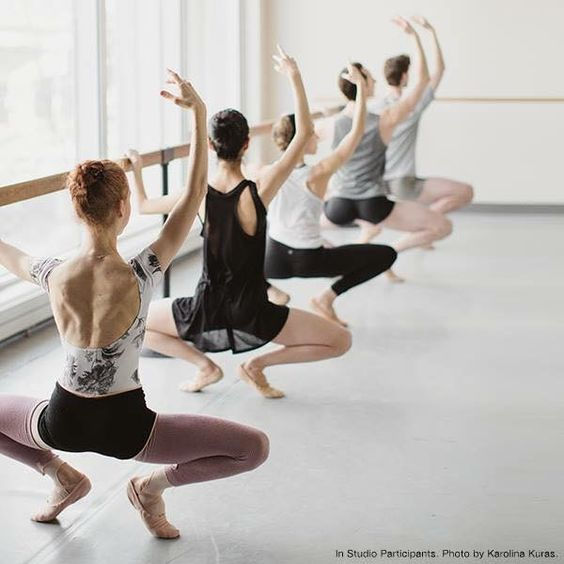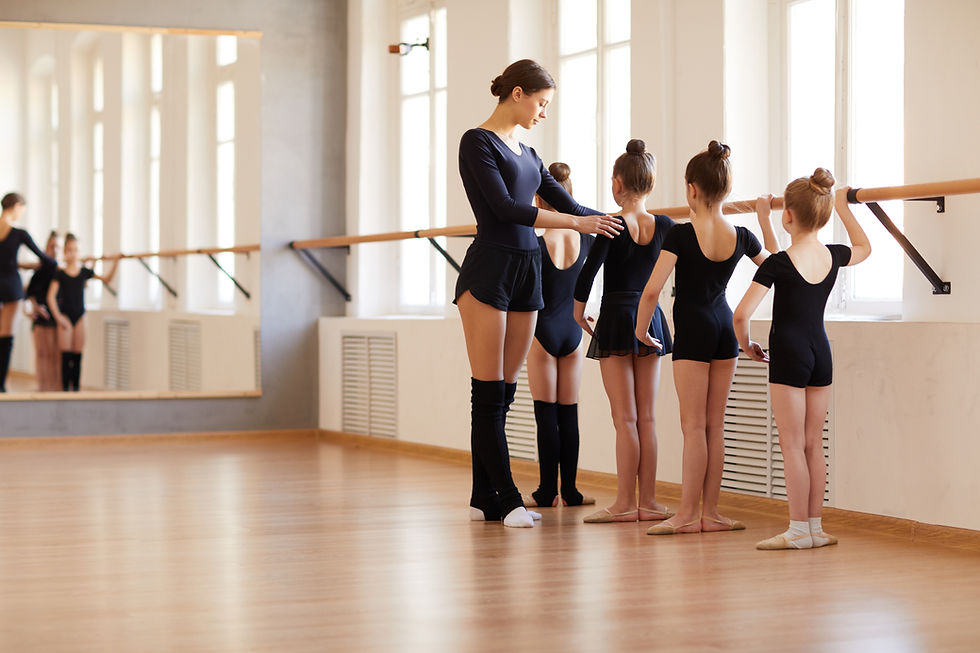HOW TO CHOOSE YOUR DANCE CLASS: THE COMPLETE GUIDE
- Virginie Basecq

- Aug 17, 2023
- 5 min read
Dance is a form of artistic expression that appeals to many people around the world. Whether it's traditional dances, contemporary dances, ballroom dances or even urban dances, there are a multitude of dance styles to explore.
If you're ready to take the plunge and sign up for a dance class, here's a comprehensive guide to help you choose the class that's right for you.

1. Identify your goals
Before signing up for a dance class, take some time to think about your goals. Defining them will help you narrow your search and choose a course that suits your needs.
They can vary according to the level of practice, the style of dance and your personal interests.
Here are a few :
Technical mastery: Improve your dance technique, including body placement, posture, coordination, flexibility, muscle strength and precise execution of movements.
Expressivity and Interpretation: Developing the ability to express emotions and ideas through dance, using body language to tell stories or communicate feelings.
Performance improvement: Work on the quality of the performance in terms of stage presence, charisma, engagement and interaction with the public.
Creativity: Explore and develop your creativity in dance, by improvising or creating your own choreographies.
Endurance and Fitness: Improve cardiorespiratory endurance and overall fitness to perform dance moves with ease and energy.
Flexibility: Work on flexibility to allow a greater range of motion and prevent injury.
Collaboration and teamwork: Learning to dance in harmony with other dancers, respecting others and developing collaboration skills.
Learning new styles: Discovering and exploring different dance styles (classical, contemporary, hip-hop, salsa, etc.) to broaden their skills and knowledge.
Participation in shows and events: Having the opportunity to perform in front of an audience, whether at shows, competitions or special events.
Pleasure and well-being: Finding satisfaction and pleasure in the practice of dance, cultivating a form of artistic expression that also promotes physical and emotional well-being.
These objectives can be adapted according to the individual needs and aspirations of each dancer. It is important to set realistic and progressive goals so that the practice of dance remains enriching and rewarding.
2. Explore different dance styles
Learn about the different dance styles available in your area. Whether it's salsa, hip-hop, ballet, tango, jazz, ballet, contemporary, swing, or any other dance that interests you, it's essential to understand the specifics of each style.

Exploring different dance styles can be a rewarding and fun experience. Here are some steps to help you do that:
Do some research: Start by researching the different dance styles that interest you. Read books, watch performance videos, visit specialty websites, and explore online resources to learn more about each style.
Attend shows and classes: Try attending live dance shows in your area or watch performances online. This will allow you to see dance styles in action and find out what appeals to you the most. Then find dance classes in your area that teach the styles that interest you.
Take a trial class: If you're new to a particular style, look for introductory classes or beginner classes. These classes are designed for people with no prior experience and will get you up to speed with the basics of styling.
Participate in workshops and courses: Workshops and courses are often offered by professional dancers and reputable dance schools. It's a great opportunity to deepen your knowledge in a specific style and benefit from expert advice.
Be open to experience: When exploring different dance styles, keep an open mind and try to fully immerse yourself in each style. Don't be discouraged if some styles seem difficult at first. Allow yourself time to familiarize yourself with the movements and rhythms specific to each style.
Join a community of dancers: Join groups or communities of dancers who are interested in the different styles you are exploring. Interacting with other dance enthusiasts will allow you to share knowledge, tips and inspirations.
Finally, remember that exploring different dance styles is an ongoing journey. Don't be afraid to step out of your comfort zone and discover new forms of artistic expression through dance.

3. Skill level
Some dance classes are specially designed for beginners, while others are aimed at more advanced dancers.
Be honest in assessing your current skill level. If you've never danced before, look for classes aimed at beginners to develop a solid foundation.
If you already have experience, look for more advanced courses to keep progressing.
4. Qualified teacher
The teacher plays a crucial role in your dance learning experience. Look for teachers who are qualified and experienced in the style of dance that interests you.
A good teacher will be able to guide you, motivate you and help you improve your skills while making the lessons enjoyable and stimulating.

5. Facilities and location
Check the location of the dance studio relative to your home or workplace. A nearby studio will make it easier for you to attend classes.
Also, make sure the studio has adequate facilities, such as proper dance equipment, clean changing rooms, and breakout areas.
6. Trial lesson
Before committing to a full session, find out about the possibility of taking part in a trial lesson. This will allow you to familiarize yourself with the atmosphere of the course, the style of the teacher, and to determine if it is suitable for you before committing to a longer period.
7. Atmosphere and community
Dance is also a social experience. Make sure the atmosphere of the course matches what you are looking for.
Some classes may be more competitive and performance-oriented, while others focus more on playful learning and relaxation.
Choose an environment where you feel comfortable and where you can thrive.

8. Course cost and duration
Compare dance class costs at different studios to make sure it fits your budget. Also take into account the duration of the lessons and the frequency of the sessions.
Some studios offer intensive courses, while others offer longer, regular sessions. Choose the one that best suits your schedule and financial constraints.
9. Look for reviews and testimonials
Before signing up, look for reviews and testimonials from former students or people who have taken classes at the same studio. This feedback will give you a clearer picture of what to expect.
10. Follow your heart
Finally, don't forget that dance is above all a passion and a form of personal expression. Follow your heart and choose a class you are truly passionate about.
When you are motivated and inspired, you will progress further and fully enjoy every moment of your dance experience.
In conclusion, choosing your dance class is an important step in your career as a dancer. Take the time to research, explore different options, and listen to your instincts.
Whether you're looking to learn a new dance, improve your skills, or just have fun, there's a dance class that's right for you.
So, put on your dancing shoes and embark on this beautiful artistic adventure!







Commentaires